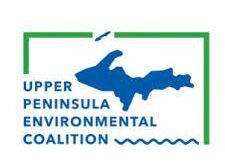Six Upper Peninsula health departments and 26 community partners announce the release of a first-of-its-kind Community Health Needs Assessment (CHNA) covering all 15 U.P. counties. The 350-page report, now available on-line to the general public, provides a wealth of information on the health status of U.P.’s 310,000 residents.
The newly published CHNA is the culmination of an 18-month project led by local health departments in collaboration with hospitals, behavioral health agencies and health foundations. It includes data on health across the lifespan, access to care, community issues like drug abuse, and results from an extensive health survey conducted last August. Stakeholders will use the data to inform residents, identify priorities for community health improvement, and measure changes over time.
“Community health needs assessment and health improvement planning are core functions of public health,” said Kate Beer, the Western U.P. Health Department health officer. “The findings in this report will help healthcare providers and communities address the health needs of people across the region.”
Beer said a unique partnership of 32 organizations serving the U.P. made it possible to conduct a comprehensive regional assessment of unprecedented breadth and depth.
“This is a very robust assessment, with county-level data on topics from pregnancy and births to leading causes of death,” said Beer. “With survey data from more than 4,800 U.P. residents, we have a wealth of information on general health status and prevalence of chronic diseases; health behaviors like diet, exercise, and alcohol, tobacco and drug use; rates for accessing preventive care like checkups, dental visits, immunizations and cancer screenings; and rankings as to the relative importance of 16 broad health issues, based on respondents’ perceptions of their communities.”
The assessment’s key findings outlined in its executive summary include:
⦁ The impact of the region’s aging population on current and future healthcare needs;
⦁ The importance of prevention – reducing tobacco use, maintaining a healthy body weight, and not drinking to excess – in reducing rates of heart disease, cancer, diabetes and other chronic diseases;
⦁ Disparities in health access, behaviors and outcomes for residents of various income and education levels;
⦁ Improvements in health insurance coverage over the past few years, countered by persistent widespread health professional shortages for primary care, dental care, and behavioral health services; and
⦁ Residents’ concerns about issues including the high cost of health care, drug abuse, and lack of options for long-term care and dementia care, among many community health issues.
The report also highlights emerging health issues, including the opioid epidemic. Overdose deaths from heroin and prescription drugs have risen dramatically in recent years, and the Upper Peninsula’s per capita rate for Neonatal Abstinence Syndrome (babies going through drug withdrawal after being exposed to opioids or other addictive drugs in the womb) is three times the Michigan average.
Although there are clearly challenges ahead, local health officials express optimism at the prospects for improving the health of U.P. residents.
“With the information in this assessment at hand, stakeholders can identify priorities and focus on finding meaningful solutions to each community’s most pressing needs,” said Beer. “Data-driven planning will help us make the best use of limited resources, and could also bring new programs and funding to our region.”
For more information and to view or download the full report and 15 county summaries, visit www.wupdhd.org/upchna.
 Keweenaw Report Your Source for Local News and Sports
Keweenaw Report Your Source for Local News and Sports






